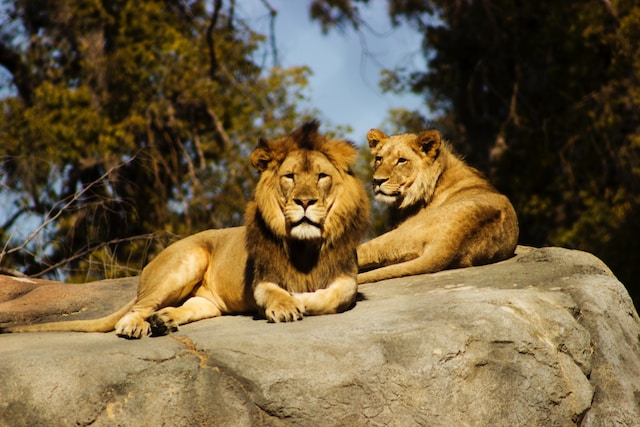In a realm where the regal reign of lions intertwines with the art of veterinary medicine, a new era of advanced diagnostic techniques has emerged. These cutting-edge practices are revolutionizing the way veterinarians diagnose and treat the health challenges faced by these magnificent creatures. Today, we delve into the world of veterinary innovation and explore the remarkable techniques employed by dedicated professionals to unlock the mysteries of lion diagnoses.
Traditionally, diagnosing and treating illnesses in lions has been a formidable task. These large and powerful creatures are not easily examined or treated using conventional methods. However, thanks to advancements in veterinary technology and collaborative efforts between wildlife veterinarians, researchers, and conservationists, new techniques are being developed to overcome these challenges.
One such technique that has proven invaluable is remote sensing technology. Veterinarians now utilize unmanned aerial vehicles (UAVs), commonly known as drones, equipped with high-resolution cameras and thermal imaging sensors. These aerial platforms allow experts to observe and monitor lions from a safe distance, capturing vital information about their behavior, body condition, and potential signs of illness. Remote sensing technology not only minimizes stress for the animals but also provides veterinarians with valuable data for accurate diagnoses.
Non-invasive diagnostic techniques have also emerged as a game-changer in the field of lion healthcare. Magnetic resonance imaging (MRI) and computed tomography (CT) scans, which were previously inaccessible for wild animals, are now being utilized to assess the internal structures and detect abnormalities in lions. These non-invasive procedures eliminate the need for invasive surgeries, reducing risks and improving the overall well-being of the animals. By combining these advanced imaging techniques with the expertise of veterinary radiologists, veterinarians can now obtain detailed and precise diagnoses.
Another breakthrough in lion diagnostics is the use of biomarker analysis. Blood, urine, and fecal samples collected from lions provide valuable insights into their health status. Through sophisticated laboratory techniques, veterinarians can identify biomarkers associated with specific diseases or physiological changes in these big cats. By monitoring changes in these biomarkers over time, veterinarians can track the progression of diseases, assess treatment effectiveness, and make informed decisions about the well-being of individual lions and entire populations.
However, the success of these advanced diagnostic techniques heavily relies on collaboration and interdisciplinary approaches. Veterinarians work closely with geneticists, pathologists, epidemiologists, and other specialists to unravel the complexities of lion health. By combining their expertise and knowledge, these professionals can develop comprehensive diagnostic protocols and treatment plans that address the unique challenges posed by these magnificent creatures.
Ethical considerations are at the forefront of all veterinary interventions. Wildlife veterinarians adhere to strict ethical guidelines to ensure the well-being and conservation of lions. Their work is driven by the dual goals of providing optimal care for individual animals and contributing to the long-term survival of lion populations. Conservation organizations, alongside veterinary professionals, strive to maintain a delicate balance between invasive interventions and the preservation of these wild animals’ natural behaviors and habitats.
As we continue to unlock the secrets of lion diagnoses through advanced techniques, the field of veterinary medicine stands poised to make great strides in improving the health and well-being of these noble beasts. The dedication and ingenuity of wildlife veterinarians, coupled with cutting-edge technology and interdisciplinary collaboration, offer a beacon of hope for the future of lion conservation.
In conclusion, the innovative techniques employed by veterinarians are transforming the landscape of lion diagnoses. Through the use of remote sensing technology, non-invasive imaging, and biomarker analysis, these professionals are gaining unprecedented insights into the health challenges faced by these magnificent creatures. By combining expertise, collaboration, and ethical considerations, veterinary medicine










